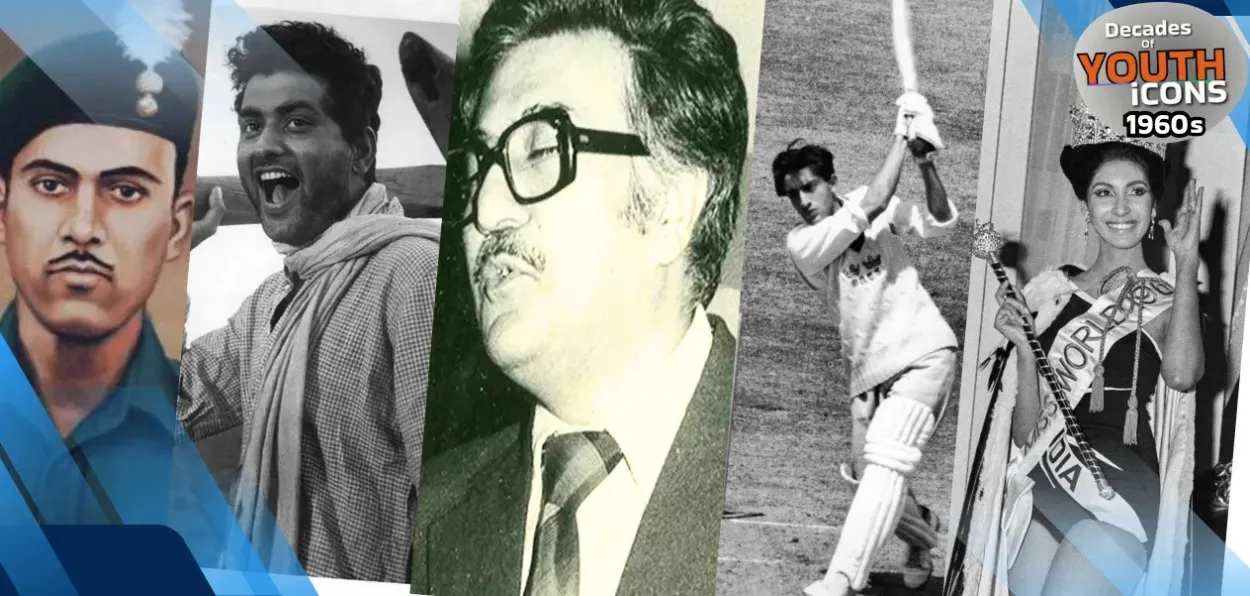
Saquib Salim
The 1960s were a tumultuous decade, marked by the death of Jawaharlal Nehru, invasions from China and Pakistan, the liberation of Goa, the merger of Sikkim, the emergence of Indira Gandhi on the political scene, and the green revolution led by Lal Bahadur Shastri.
Here are five young Indians who became heroes for the Indian youth in this decade:
Havildar Abdul Hamid
CLR James once wrote, “A national Hero must have a nation. The nation, as it was, could do nothing for the national hero except applaud.” Abdul Hamid is a national Hero who laid down his life at the age of 32, after inflicting a heavy blow to Pakistan on the battlefield during the 1965 war. Pakistan, led by Ayub Khan, invaded India, saying the war was meant to save Muslims of India. The Pakistan Army was confident of its fleet of Patton tanks procured from the USA, but they did not know that an Indian Muslim, Abdul Hamid of 4 Grenadiers, would wipe out their tank platoon just with an RCL gun mounted atop his Jeep.
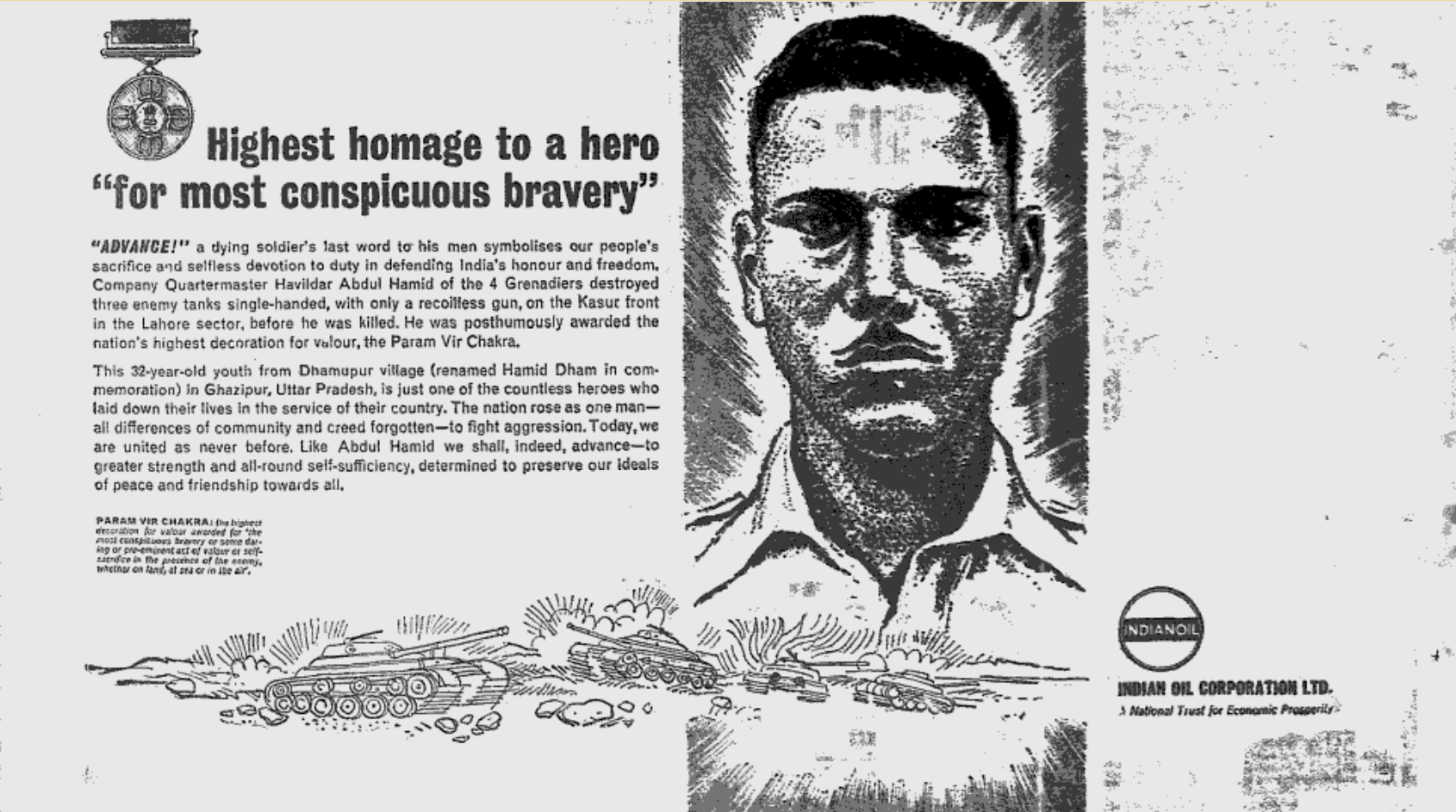
IOCL paying tributes to Veer Abdul Hamid in its poster in 1965
On 8 September 1965, the Pakistan Army invaded India at the Khem Karan sector in Punjab with advanced tanks. At 9 am, Hamid spotted a Pakistani tank battalion heading towards him. Sitting in a Jeep mounted with an RCL gun, he thought about his options. Of course, the RCL gun was no match for a battalion of Patton tanks. The decision was made, he would fight Patton tanks with his RCL gun. Taking cover in sugarcane fields, the Jeep remained hidden from the sight of Pakistani tanks.
As soon as Hamid felt that the tank moving ahead was within shooting range, he fired at it. The tank was up in flames. To fire upon a tank with an RCL gun when it is only 30 yards away is an insanely courageous act. Other Pakistanis, following the tank deserted their tanks and fled. Effectively, three Patton tanks were defeated, one destroyed, and two captured by Hamid. The feat was unprecedented. More tanks were soon added to his kitty. By the next evening, the authorities had sent the citation for Param Vir Chakra.
On 10 September, the day after Hamid had won PVC, he again destroyed several tanks before laying down his life for the country. Apart from destroying more than 9 and capturing many more, what he achieved was that the myth of the invincibility of the Patton tanks was broken. Indians knew how to destroy them with RCL guns. After this, almost every Indian soldier would win a combat against the Pakistani tanks with Jeep-mounted RCL guns.
India got the much-desired national hero. His sacrifice defeated Pakistan on the battlefield as well as in International diplomacy, where they claimed that Indian Muslims were being marginalized in India. Indian youth got a hero. A man who was not a high-ranking official, with minimum weaponry, defeated the world's finest tanks with courage and intelligence.
Mansoor Ali Khan Pataudi
Till the 1950s, India was primarily a hockey-playing nation. Cricket was popular but limited to urban centres, and the team was rather treated as underdogs. In 1961, a new star shone on the horizon of Indian cricket. He was Mansoor Ali Khan Pataudi, alias Nawab Pataudi, nicknamed Tiger Pataudi.
Son of Iftikhar Ali Khan, who scored a century on debut for England and later played for India as well, he was considered to be the next big thing in 1960 when he was breaking records while playing for the Oxfords. The same year, he lost an eye to a road accident. When everyone thought that he could not play again, Tiger came back to debut for the Indian team within six months. He scored a century against England and became captain at 21 years 77 days, the youngest ever at the time. He went on to captain India in 40 out of the 46 tests he played.
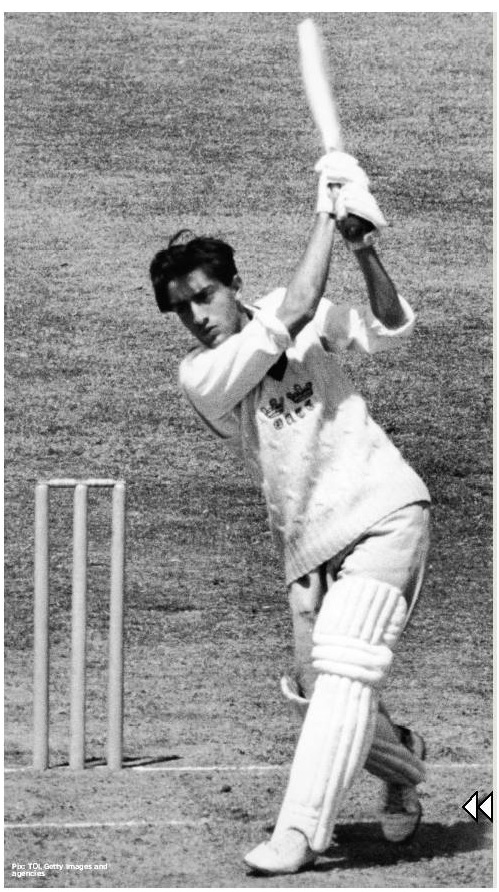
Nawab of Pataudi, Mansoor Ali Khan
The 1960s belonged to him. Before Ganguly or Dhoni, Tiger Pataudi was the captain who led the Indians to attack the opposition. The team under him won the first-ever overseas test as well as the series. His fielding was the best, and he was an aggressive batter. With his presence, the Indians developed an instinct to kill. The team learnt, though slowly, to win. The cricketers who followed were more confident and attacking. The next generation, under Kapil Dev, would lift the World Cup in 1983.
Manoj Kumar
A man in his 20s, who had been forced to migrate in the Partition of India, essayed the role of Bhagat Singh in Shaheed in 1965, a year that saw India warding off an invasion from China. Manoj Kumar researched for his role for four years. Batukeshwar Dutt, who, along with Bhagat Singh, hurled a bomb in the legislative assembly, wrote the story of the film. The film received appreciation from Prime Minister Lal Bahadur Shastri. He asked Manoj Kumar to make a movie to highlight the slogan Jai Jawan Jai Kisan (Victory to youth, Victory to peasant). The result was the 1967 movie, Upkar, which featured the famous song Mere Desh ki Dharti.
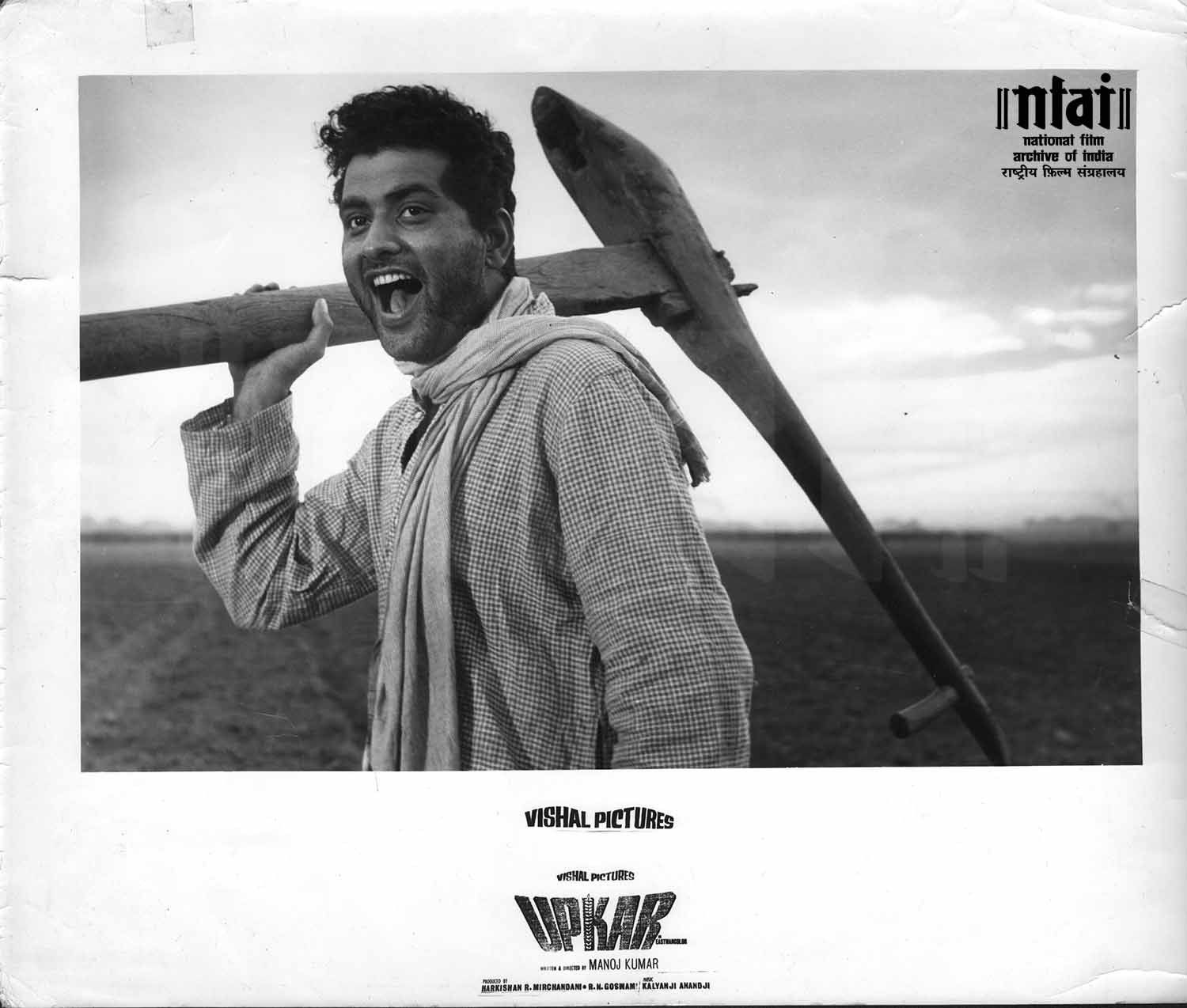
Manoj Kumar in the poster of film Upkaar
Manoj Kumar acquired the name Bharat Kumar for his role as a patriotic hero. He played characters who reflected on their love for their country. His patriotism was slogan-based, but it was by contributing to India's growth. India was working on food security, Manoj Kumar's roles pushed Indians towards making it happen.
Reita Faria
A 23-year-old Medical student at Grant Medical College, Mumbai (then Bombay) created international headlines in November 1966 when she won the Miss World title. Reita Faria, from Goa, was an MBBS student and a decent Hockey player before becoming the first Asian woman to win the Miss World title. She represented a perfect blend of modernity, Eastern culture, and education. This MBBS student won the ‘Best in Swimsuit’ round as well as ‘Best in Eveningwear’ with a saree.
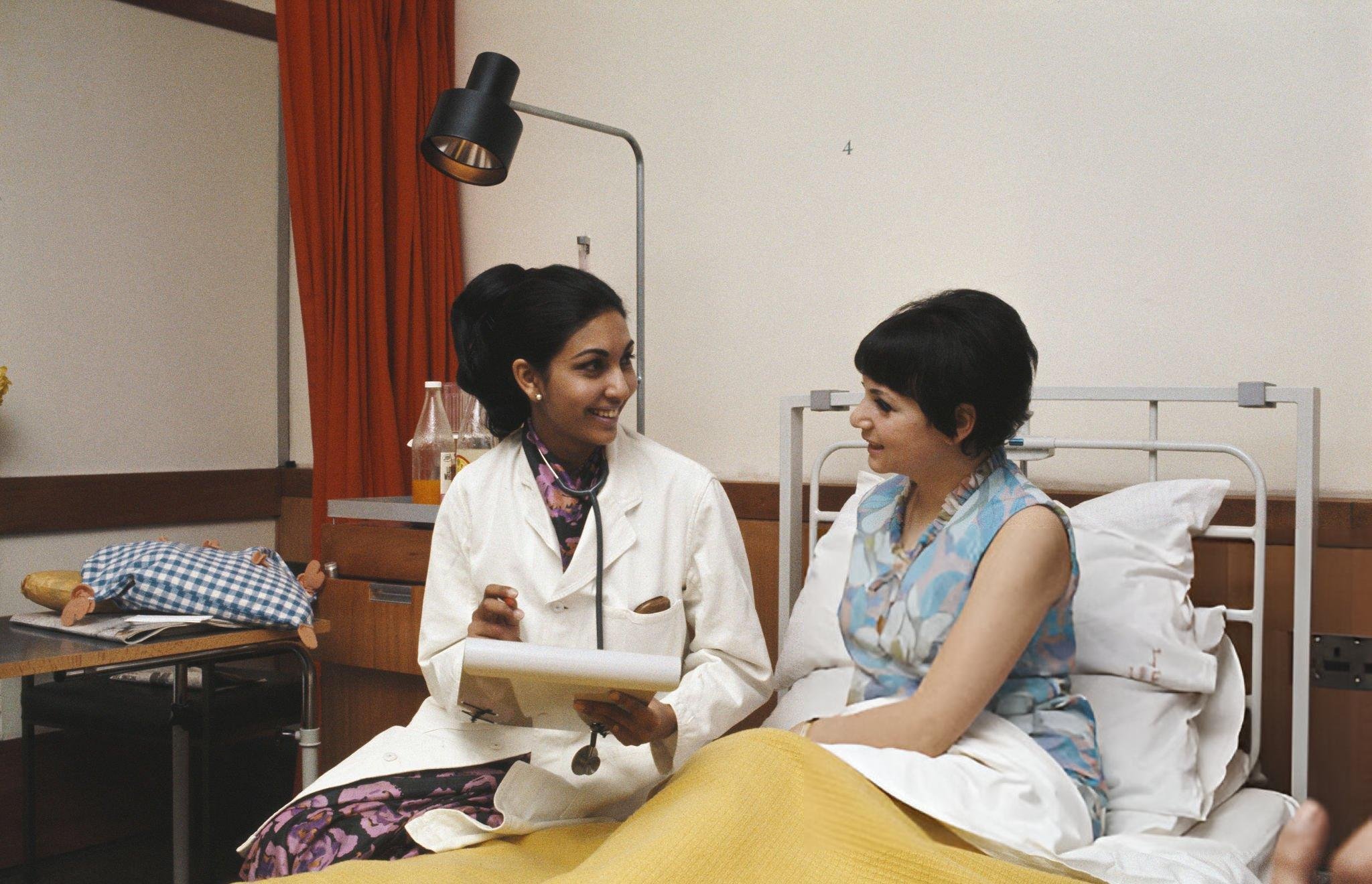 Reita Faria attending to a patient
Reita Faria attending to a patient
The young India at that time was torn between this dilemma of what to accept as modern and what not to. Reita was an example that Indian girls can carry themselves in a swimsuit as well as a saree at the same time. The beauty queen from India should not be a market commodity but a well-educated doctor. If this was not enough, she proved herself to be a perfect role model later on. All the lucrative modelling and film assignments were turned down in favour of continuing the medical education. She went on to pursue higher education in London and practiced medicine.
Indians born after 1966 in Urban India could still recall how Reita Faria as the role model of their parents' generation.
Ameen Sayani
If there is one voice that defined the radio in India, it is that of Ameen Sayani. For five decades beginning in the 1950s, he was the undisputed voice of India. He was 20 when he presented Binaca Geet Mala at Radio Ceylon, broadcast on 8 pm every Wednesday. Sayani, a grandson of the former President of the Indian National Congress, Rahimatullah Sayani, was the most recognisable voice in India.

Voice of the Radio: Ameen Sayani
Interestingly, he was rejected initially during auditions, but his distinct style of presentation was later emulated by the radio announcers, commentators, advertisers, etc. One could hear local announcements in exhibitions and melas in a tone copied from him.
ALSO READ: 5 youth icons of India of the 50's
Sayani was surely the most idolised voice in India before the rise of Amitabh Bachchan.
